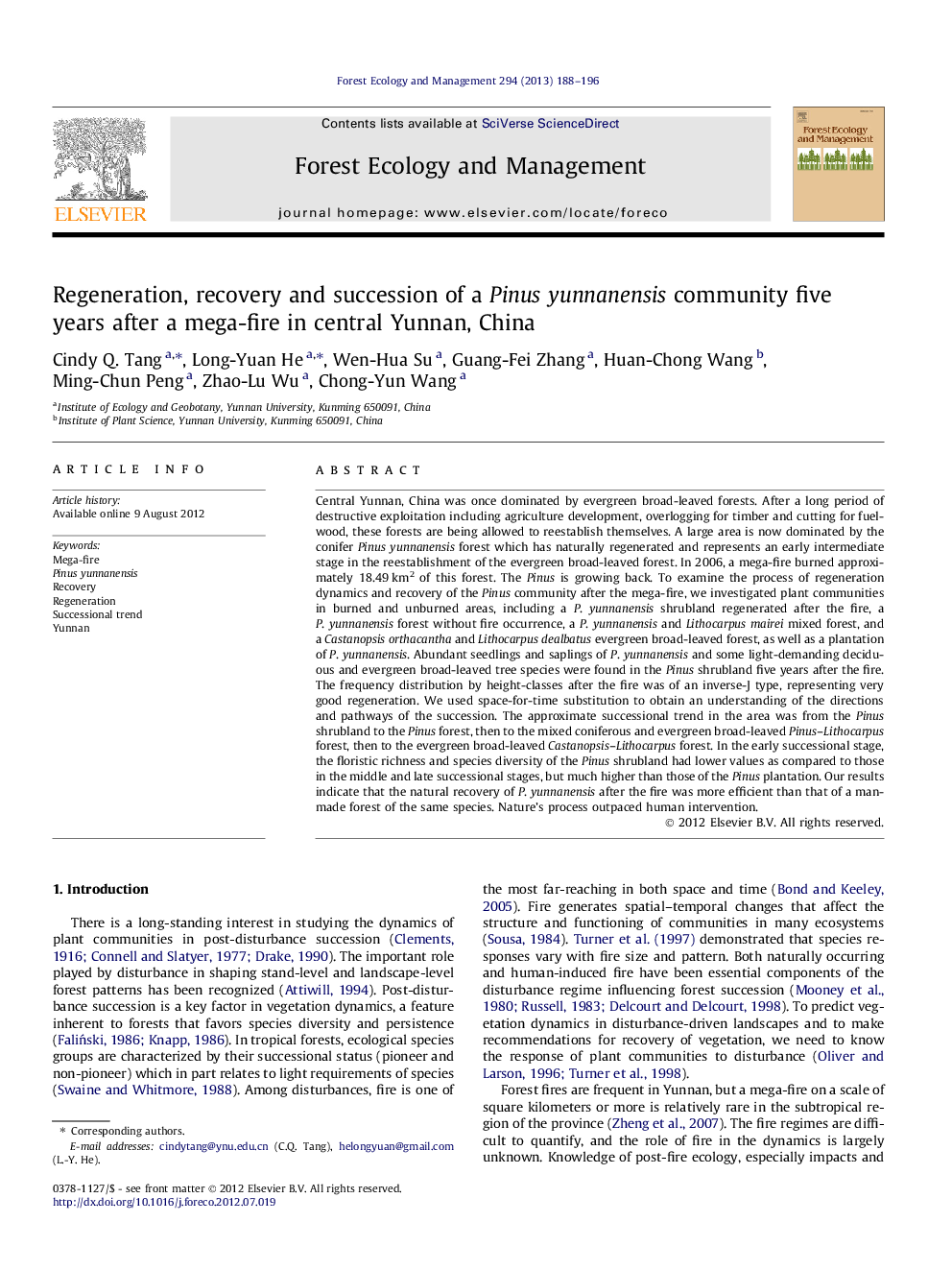| Article ID | Journal | Published Year | Pages | File Type |
|---|---|---|---|---|
| 86889 | Forest Ecology and Management | 2013 | 9 Pages |
Central Yunnan, China was once dominated by evergreen broad-leaved forests. After a long period of destructive exploitation including agriculture development, overlogging for timber and cutting for fuelwood, these forests are being allowed to reestablish themselves. A large area is now dominated by the conifer Pinus yunnanensis forest which has naturally regenerated and represents an early intermediate stage in the reestablishment of the evergreen broad-leaved forest. In 2006, a mega-fire burned approximately 18.49 km2 of this forest. The Pinus is growing back. To examine the process of regeneration dynamics and recovery of the Pinus community after the mega-fire, we investigated plant communities in burned and unburned areas, including a P. yunnanensis shrubland regenerated after the fire, a P. yunnanensis forest without fire occurrence, a P. yunnanensis and Lithocarpus mairei mixed forest, and a Castanopsis orthacantha and Lithocarpus dealbatus evergreen broad-leaved forest, as well as a plantation of P. yunnanensis. Abundant seedlings and saplings of P. yunnanensis and some light-demanding deciduous and evergreen broad-leaved tree species were found in the Pinus shrubland five years after the fire. The frequency distribution by height-classes after the fire was of an inverse-J type, representing very good regeneration. We used space-for-time substitution to obtain an understanding of the directions and pathways of the succession. The approximate successional trend in the area was from the Pinus shrubland to the Pinus forest, then to the mixed coniferous and evergreen broad-leaved Pinus–Lithocarpus forest, then to the evergreen broad-leaved Castanopsis–Lithocarpus forest. In the early successional stage, the floristic richness and species diversity of the Pinus shrubland had lower values as compared to those in the middle and late successional stages, but much higher than those of the Pinus plantation. Our results indicate that the natural recovery of P. yunnanensis after the fire was more efficient than that of a man-made forest of the same species. Nature’s process outpaced human intervention.
► We examined the recovery of a Pinus community after a mixed-severity mega-fire. ► The natural regeneration of the Pinus yunnanensis community after the fire is good. ► We advise against replanting P. yunnanensis after a fire for forest restoration.
